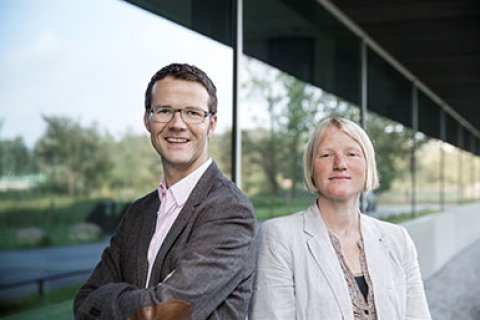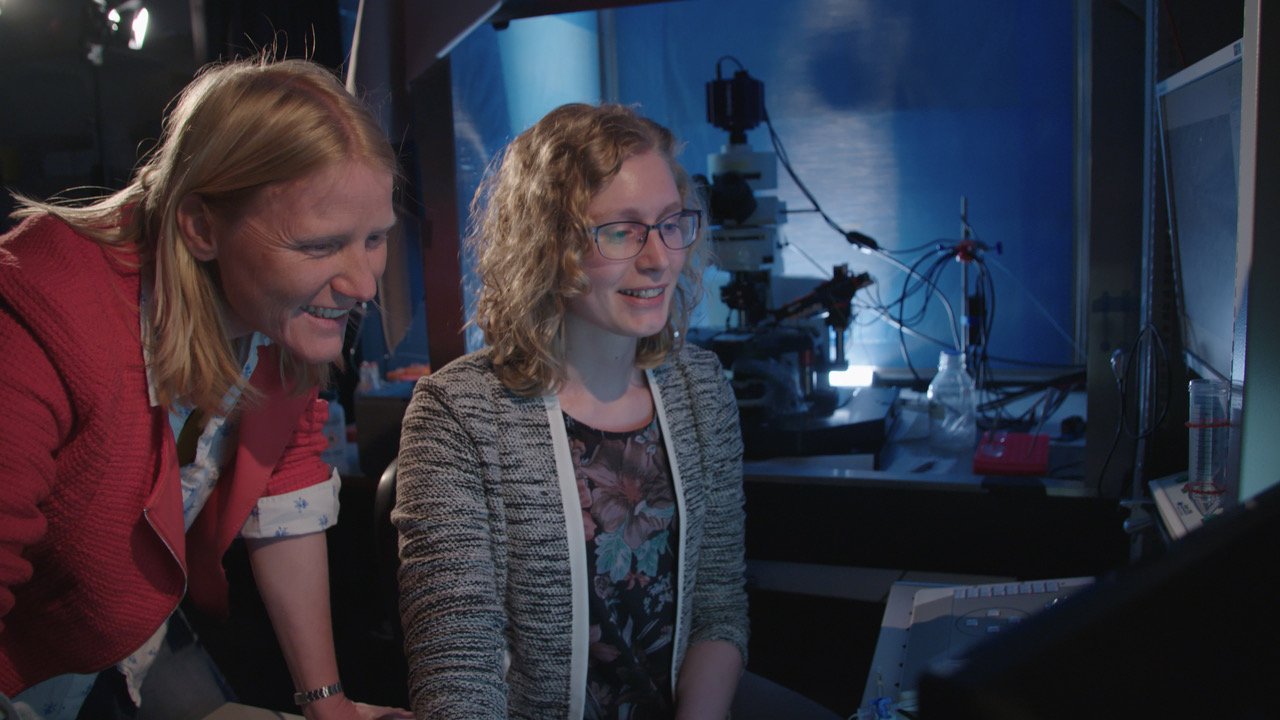A Massive Open Online Course on child development
Utrecht University's Massive Open Online Course (MOOC): 'Understanding Child Development - from Synapse to Society' was developed within Dynamics of Youth. The MOOC aims to point out the importance of an interdisciplinary approach for understanding child development, and to show how Dynamics of Youth facilitates researchers to do so.
Jorg Huijding, associate professor Clinical Child and Family Studies, leads the MOOC-making team. He hopes that this MOOC will inspire people to think more holistically about development, and perhaps even surprise them with some new angles to approach developmental issues. "We illustrate this with short video portraits of various collaborating researchers."

Hitting walls
One of those collaborations is the one between Louk Vanderschuren and Corette Wierenga. Vanderschuren, professor of Behavioural Neuroscience, works with rat models to understand the neurobiology of social behaviour. Wierenga, associate professor in (cell)biology, specialises in neurons and their dynamic connections. Huijding: “The portrait we made of them illustrates that true interdisciplinary scientific cooperation can only happen when you consciously hit the walls of your own research territory, and are curious to find out what’s behind those walls. For instance, Corette Wierenga explains that she learned things about behavior that she otherwise wouldn’t have focused on.”
Broaden and abandon
The other key point this MOOC addresses, is the essence of Dynamics of Youth: capturing Growing Up from the smallest (synapses, for example) to the largest levels of organisation (society). Studying development at all these levels, and including all the interactions within and between them cannot be done in one, or even multiple lifetimes worth of research. That is why the collaborations within Dynamics of Youth are so important. "However, collaborating takes courage and investment", Huijding adds. "You should be able to look beyond your own theories, and be willing to broaden or even abandon them. Some researchers find this hard, but in fact each time a theory is abandoned we should all be cheering, because it means science has brought us one step further.”
Course design
The MOOC 'Understanding child development – from Synapse to Society' takes six weeks to complete, and requires 4 hours of study per week. It can be joined by everyone with the ability of thinking academically. Every weekly program consists of two six minute web-lectures, interviews, quizzes and reading material.
Week 1 Introduction and explanation of the developmental systems approach to understand child development, the need for interdisciplinary collaboration, and how DoY facilitates all this.
Week 2 Brain and motor development
Week 3 Cognitive development
Week 4 Speech and language development
Week 5 Social/emotional development
Week 6 Wrap up: integration of all the previously presented and explained material
Is this a course for you?
This course is open to everyone interested in child development. Everyone with an internet connection and academic thinking skills can join. You too are welcome to follow us on a journey to understand child development from synapse to society!
Interested in participating?
Enrollment for this course is free. Participants only pay a fee if they want to obtain a certificate at the end of the course. You can register online via Coursera.
If you have any questions about this course, please visit the Help Center on the Coursera website, where you will be able to find an answer to most questions. If you can't find the answer to your question there, please contact Coursera.


